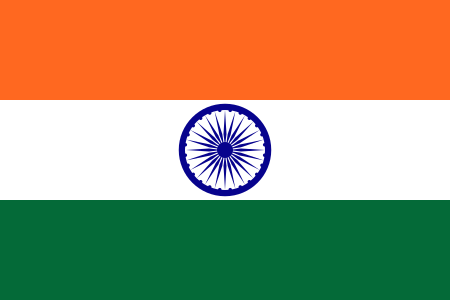History of slavery in Louisiana
|
Read other articles:

Airport in ZakynthosZakynthos International Airport Dionysios SolomosΔιεθνής Αερολιμένας Ζακύνθου«Διονύσιος Σολωμός»IATA: ZTH[1]ICAO: LGZA[1]SummaryAirport typePublicOwnerGreek stateOperatorFraport AG/Copelouzos Group joint ventureLocationZakynthosElevation AMSL15 ft / 5 mCoordinates37°45′03″N 20°53′03″E / 37.75083°N 20.88417°E / 37.75083; 20.88417Websitezth-airport.grMapZTHLocation of …

Federal constituency of Kelantan, Malaysia Tumpat (P019) Kelantan constituencyFederal constituencyLegislatureDewan RakyatMPMumtaz Md. NawiPNConstituency created1958First contested1959Last contested2022DemographicsPopulation (2020)[1]179,944Electors (2023)[2]150,248Area (km²)[3]180Pop. density (per km²)999.7 Tumpat is a federal constituency in Tumpat District, Kelantan, Malaysia, that has been represented in the Dewan Rakyat since 1959. The federal constituency was creat…

هنودمعلومات عامةنسبة التسمية الهند التعداد الكليالتعداد قرابة 1.21 مليار[1][2]تعداد الهند عام 2011ق. 1.32 مليار[3]تقديرات عام 2017ق. 30.8 مليون[4]مناطق الوجود المميزةبلد الأصل الهند البلد الهند الهند نيبال 4,000,000[5] الولايات المتحدة 3,982,398[6] الإمارا�…

Ця стаття потребує додаткових посилань на джерела для поліпшення її перевірності. Будь ласка, допоможіть удосконалити цю статтю, додавши посилання на надійні (авторитетні) джерела. Зверніться на сторінку обговорення за поясненнями та допоможіть виправити недоліки. Матер…
53rd season in franchise history; final one in the Metrodome 2013 Minnesota Vikings seasonOwnerZygi WilfHead coachLeslie FrazierHome fieldMall of America Field at the Hubert H. Humphrey MetrodomeResultsRecord5–10–1Division place4th NFC NorthPlayoff finishDid not qualifyPro BowlersKR Cordarrelle PattersonRB Adrian PetersonUniform ← 2012 Vikings seasons 2014 → The 2013 season was the Minnesota Vikings' 53rd in the National Football League (NFL). It also marked the Vi…

Stagione di college football 1891 Competizione College football Sport Football americano Edizione 23ª Date dal 23 settembreal 5 dicembre Luogo Stati Uniti Partecipanti 26 Risultati Vincitore Yale Statistiche Incontri disputati 160[1] Cronologia della competizione 1890 1892 Manuale La Stagione di college football 1891 fu la ventitreesima stagione di college football negli Stati Uniti. La diffusione dello sport attraverso la nazione, continuò portando in campo per la p…

Ethnic group of Louisiana, USA This article refers to Louisiana Creoles of predominantly French Creole origin. For the article about Creoles of Canarian-Spanish origin, see Isleños in Louisiana. Louisiana Creole peopleCréoles de la LouisianeCriollos de Luisiana Total populationIndeterminableRegions with significant populations Louisiana, California, Texas[1]LanguagesEnglish, French, Spanish and Louisiana CreoleReligionPredominantly Roman CatholicRelated ethnic groupsFrench, Cajuns…

هذه المقالة عن محمد كريم، حاكم مدينة الإسكندرية الأسبق. لمعانٍ أخرى، طالع محمد كريم (توضيح). السيد محمد كُريم حاكم الإسكندرية معلومات شخصية مكان الميلاد الإسكندرية الوفاة 6 سبتمبر 1798م/1213هـميدان الرميلة، القاهرة سبب الوفاة الإعدام رمياً بالرصاص الإقامة الإسكندرية الل…

本表是動態列表,或許永遠不會完結。歡迎您參考可靠來源來查漏補缺。 潛伏於中華民國國軍中的中共間諜列表收錄根據公開資料來源,曾潛伏於中華民國國軍、被中國共產黨聲稱或承認,或者遭中華民國政府調查審判,為中華人民共和國和中國人民解放軍進行間諜行為的人物。以下列表以現今可查知時間為準,正確的間諜活動或洩漏機密時間可能早於或晚於以下所歸類�…

1995 studio album by Reba McEntireStarting OverStudio album by Reba McEntireReleasedOctober 3, 1995GenreCountryLength41:10LabelMCAProducerTony Brown, Reba McEntire, Michael Omartian (exec.)Reba McEntire chronology Oklahoma Girl(1994) Starting Over(1995) What If It's You(1996) Singles from Starting Over On My OwnReleased: August 1995 Ring on Her Finger, Time on Her HandsReleased: November 1995 Starting Over AgainReleased: March 1996 You Keep Me Hangin' OnReleased: April 1996 Professional …

جامعة كاتانيا معلومات التأسيس 19 أكتوبر 1434 الموقع الجغرافي إحداثيات 37°30′13″N 15°05′12″E / 37.5036°N 15.0867°E / 37.5036; 15.0867 المكان قطانية البلد إيطاليا رقم الهاتف 095 7307777[1]، و800644590 إحصاءات عدد الطلاب 44338 (2016)[2] عضوية أورسيد [لغات أخرى]̴…

British–French Supersonic airliner For other uses, see Concorde (disambiguation). Concorde British Airways Concorde in flight during 1986 Role Supersonic airlinerType of aircraft National origin France and United Kingdom Manufacturer British Aircraft Corporation (later British Aerospace and BAE Systems) Sud Aviation (later Aérospatiale and Airbus) First flight 2 March 1969 Introduction 21 January 1976 Retired 24 October 2003; 20 years ago (24 October 2003) (last commercial flight…

この記事は検証可能な参考文献や出典が全く示されていないか、不十分です。出典を追加して記事の信頼性向上にご協力ください。(このテンプレートの使い方)出典検索?: 新くまのプーさん – ニュース · 書籍 · スカラー · CiNii · J-STAGE · NDL · dlib.jp · ジャパンサーチ · TWL(2013年4月) ポータル ディズニー 『新くまのプー�…

Railway line in Japan Joban LineJJ JLJoban Line Series E531OverviewNative name常磐線Owner JR EastLocaleTokyo, Chiba, Ibaraki, Fukushima, Miyagi prefecturesTerminiNippori (services extended to Shinagawa)Iwanuma (services extended to Sendai (Miyagi))Stations85 on the Joban Line4 on the Ueno-Tokyo LineServiceTypeHeavy railOperator(s)JR East, JR FreightHistoryOpened16 January 1889; 135 years ago (1889-01-16)Completed1 April 1905; 119 years ago (1905-04-01)Techn…

هذه المقالة يتيمة إذ تصل إليها مقالات أخرى قليلة جدًا. فضلًا، ساعد بإضافة وصلة إليها في مقالات متعلقة بها. (مارس 2016) د. خالد السليطي Dr. Khalid Al-Sulaiti معلومات شخصية تعديل مصدري - تعديل د. خالد بن إبراهيم السليطي (بالإنجليزية: Dr. Khalid Bin Ibrahim Al-Sulaiti)، مدير عام مؤسسة الحي الثقافي ك…

أونام البلد الهند تعديل مصدري - تعديل الإستعداد ليوم ثيروفونام أونام، مهرجان حصاد سنوي هندي عام، ويحتفل به أهل منطقة كيرلا بشكل خاص، وهو من المهرجانات التعبدية في الهند، ويحتفل به سنويًا وفقًا للتاريخ المالاوي في شهري أغسطس أو سبتمبر، وتكون مدة هذا العيد 10 أيام، �…

Artikel ini membutuhkan rujukan tambahan agar kualitasnya dapat dipastikan. Mohon bantu kami mengembangkan artikel ini dengan cara menambahkan rujukan ke sumber tepercaya. Pernyataan tak bersumber bisa saja dipertentangkan dan dihapus.Cari sumber: Mangkunegara III – berita · surat kabar · buku · cendekiawan · JSTOR (Desember 2020)Mangkunegara IIIꦩꦁꦏꦸꦤꦒꦫ꧇꧓꧇Kangjeng Gusti Pangeran Adipati AryaAdipati Mangkunegaran ke-3Berkuasa29 Januari …

Kontes Lagu Eurovision 2011 Feel Your Heart Beat! Semi-final 1 10 Mei 2011 Semi-final 2 12 Mei 2011 Final 14 Mei 2011 Pembawa Acara Ange EngelkeJudith RakersStefan Raab Penyiar Tuan Rumah ARD/NDR Tempat Espirit Arena, Düsseldorf, Jerman Lagu pemenang AzerbaijanRunning Scared Sistem pemberian suara Juri dan penonton masing-masing memiliki 50% hak suara. Jumlah kontestan 43 Partisipasi pertama Tidak ada Kembali ke Kontes Austria Hungaria Italia San Marino Pembuka Stefan Raab menyanyikan lagu peme…

National flag Flag of the Turkish Republic of Northern CyprusUseNational flag and ensign Proportion2:3Adopted7 March 1984DesignA red star and crescent slightly to the left of the centre between two horizontal red bars on a white field.Designed byEmin Çizenel Flag of the president of the Turkish Republic of Northern CyprusUsePresidential StandardProportion2:3 Flags of Turkey and Northern Cyprus, North Nicosia The flag of the Turkish Republic of Northern Cyprus (Turkish: Kuzey Kıbrıs Türk…

Technology news website GigaomType of siteTechnology news and analysisAvailable inEnglishHeadquartersSanta Barbara, California, USOwnerKnowingly CorporationURLgigaom.comCommercialYesLaunched2006 Gigaom is a technology focused analyst firm and media company.[1] The company evolved from a blog which offered news, analysis, and opinions on startup companies, emerging technologies, and other technology related topics. It was started by Om Malik in San Francisco, California and after run…



